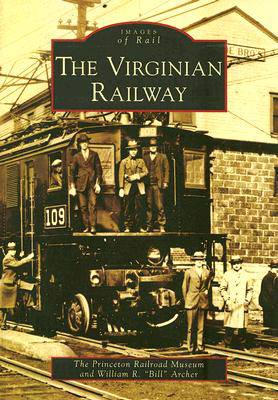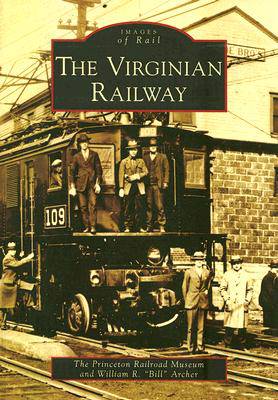
- Afhalen na 1 uur in een winkel met voorraad
- Gratis thuislevering in België vanaf € 30
- Ruim aanbod met 7 miljoen producten
- Afhalen na 1 uur in een winkel met voorraad
- Gratis thuislevering in België vanaf € 30
- Ruim aanbod met 7 miljoen producten
Zoeken
Omschrijving
The Virginian Railway existed as a separate entity for only a half century, but that period of American history witnessed two world wars and the emergence of the United States as a global superpower. Henry Huddleston Rogers, who marshaled the development of the U.S. oil industry through his leadership of Standard Oil, invested $30 million of his personal wealth into the making of the Virginian. He speculated that south-central West Virginia coal would fuel America's Industrial Revolution. Although Rogers died before his railroading dream could realize its full potential, the Virginian Railway
continued on from 1909 until its merger in 1959 with the Norfolk and Western Railway (now Norfolk Southern). During that time, the Virginian grew to a point that it was originating from 1,200 to 1,500
hundred-ton carloads of coal per day and serving 60 active coal mines. It earned a reputation for power, service, and efficiency that placed it among the great railroads of America.
continued on from 1909 until its merger in 1959 with the Norfolk and Western Railway (now Norfolk Southern). During that time, the Virginian grew to a point that it was originating from 1,200 to 1,500
hundred-ton carloads of coal per day and serving 60 active coal mines. It earned a reputation for power, service, and efficiency that placed it among the great railroads of America.
Specificaties
Betrokkenen
- Auteur(s):
- Uitgeverij:
Inhoud
- Aantal bladzijden:
- 128
- Taal:
- Engels
- Reeks:
Eigenschappen
- Productcode (EAN):
- 9780738552743
- Verschijningsdatum:
- 5/09/2007
- Uitvoering:
- Paperback
- Formaat:
- Trade paperback (VS)
- Afmetingen:
- 167 mm x 235 mm
- Gewicht:
- 317 g

Alleen bij Standaard Boekhandel
+ 69 punten op je klantenkaart van Standaard Boekhandel
Beoordelingen
We publiceren alleen reviews die voldoen aan de voorwaarden voor reviews. Bekijk onze voorwaarden voor reviews.








